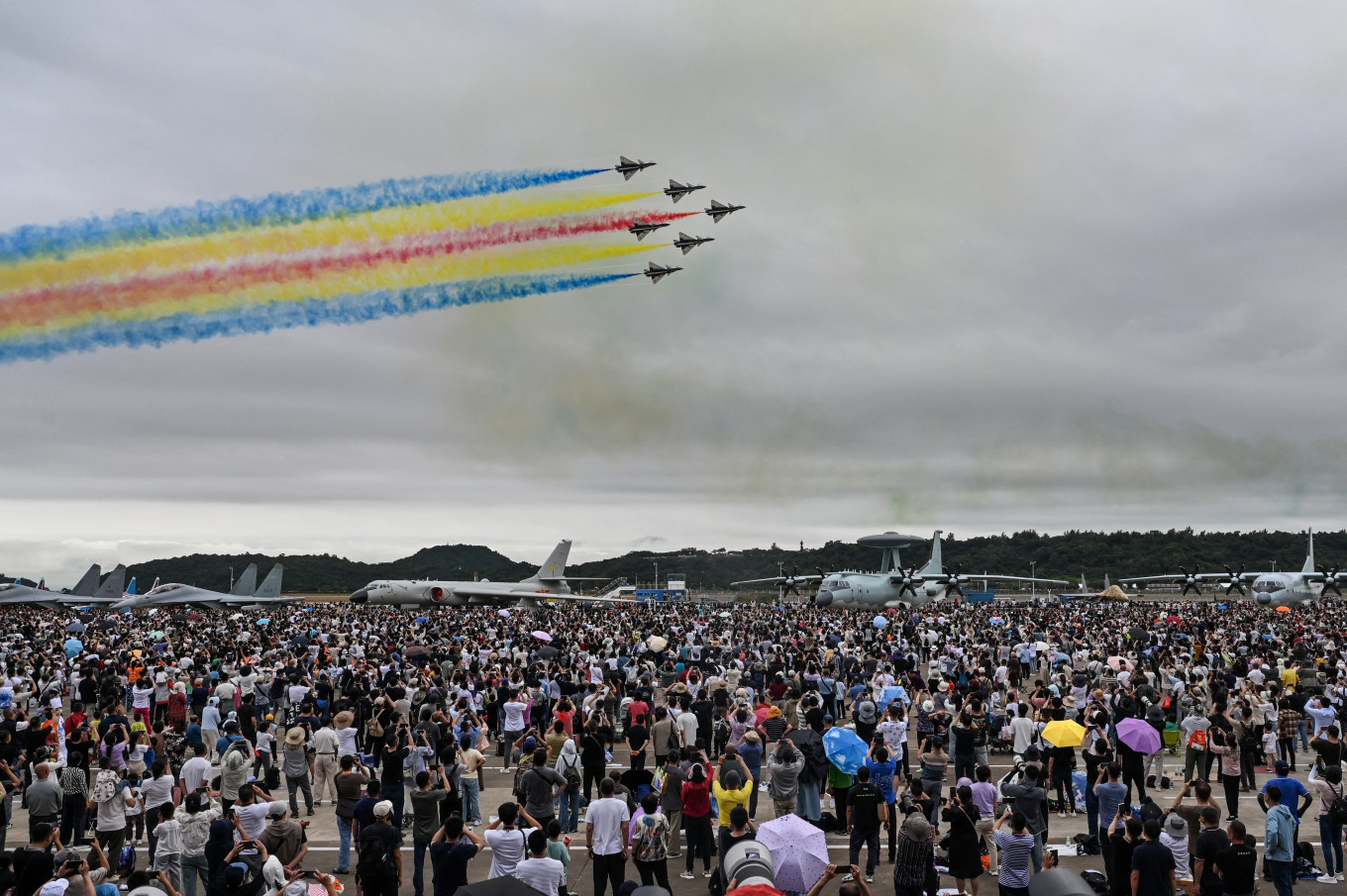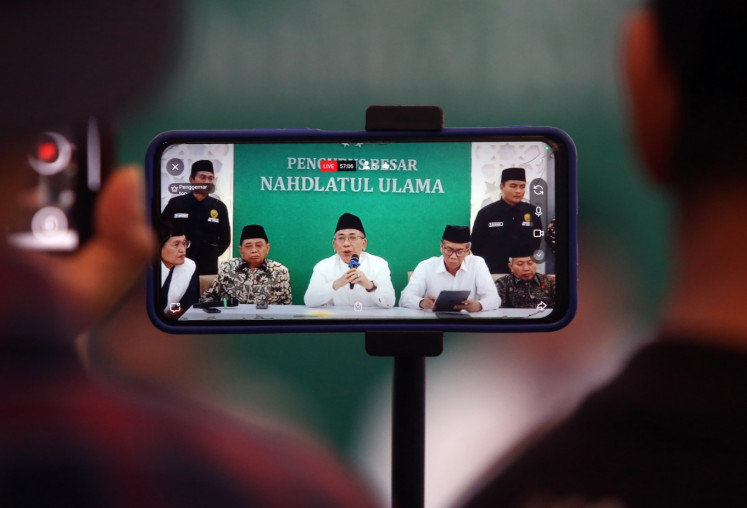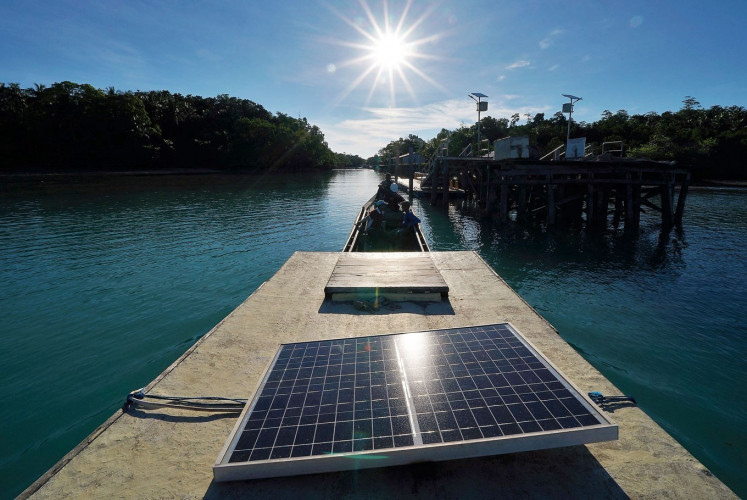Popular Reads
Top Results
Can't find what you're looking for?
View all search resultsPopular Reads
Top Results
Can't find what you're looking for?
View all search resultsChina’s flyers flout aviation rules with flares, flybys
Chinese military pilots are showing increasingly aggressive behavior in the skies, akin to that of military vessels on the seas, ramping up the growing threat they pose in both domains.
Change text size
Gift Premium Articles
to Anyone
I
t happened again. A Chinese pilot flew his aircraft dangerously close to a foreign aircraft, something that is happening with increased frequency.
In the latest incident on Feb. 19, a Chinese naval helicopter flew within 9 meters of a small, low-flying Philippine plane above Scarborough Shoal situated 120 miles (193 kilometers) from Luzon, well within the Philippines’ exclusive economic zone.
The previous week, a Chinese J-16 fighter jet made an “unsafe and unprofessional interaction” when it released at least four flares 30 meters in front of a Royal Australian Air Force P-8A Poseidon anti-submarine aircraft that was flying near the Paracel Islands.
China claims the Australian aircraft “intentionally intruded” into Chinese airspace.
In violation of international law, China has drawn straight baselines around the Paracel and Spratly Islands, something only archipelagic states are allowed to do under the United Nations Convention of the Law of the Sea.
Countries routinely challenge these excessive maritime claims through naval and aerial freedom of navigation operations, or FONOPs.
We have seen a pattern of aggressive behavior from Chinese pilots.
An October 2023 report by the United States Department of Defense documented some 180 unsafe aerial encounters by Chinese pilots in the previous two years and over 100 additional encounters with the aircraft of US allies and partners. That tally was more than all such incidents in the previous decade combined.
Most US naval aircraft are now equipped with external cameras to document dangerous Chinese encounters.
One should recount that the EP3 incident in April 2001, which led to the emergency landing and a hostage-like situation for the 24-member US navy crew, was caused by a Chinese J-8II pilot who was unaware of the concept of propellers. The pilot was killed in the resulting crash.
While Chinese pilots are famously aggressive and routinely fly at unsafe and unprofessional close quarters over the South China Sea, the dropping of flares was unseen until around 2022.
While using flares to signal an unresponsive aircraft at a safe distance is lawful and a signal of escalatory actions, how the Chinese pilots are employing them now is dangerous and unprofessional, and dramatically escalates the potential for loss of life.
There are major risks from using flares. The first is proximity: If a Chinese pilot is close enough to deploy flares in a way that could cause damage, his plane is already flying at an unsafe distance.
Most of the flares used are pyrotechnic magnesium, a dense mass of inflamed metal that burns at very high temperatures. These flares perform as decoys for heat-seeking missiles and pose multiple risks to planes that could lead to the loss of human life. They can be sucked into a jet engine intake or for propeller-driven planes, a direct hit on the engine could irreparably damage the propeller.
There is a greater threat to helicopter rotors. Though it is unlikely they could get through the rotor blades and into the filtered intake, this is not impossible. Moreover, the skin of many military helicopters is made of highly flammable magnesium alloys.
Many surveillance and anti-submarine helicopters fly with open doors and the last thing their crews want is a flare, ejected out of a plane at an angle, getting inside.
Another concern is escalatory threat. To some sensors on aircraft, flares can appear as missiles. This is in an already tense operating environment, when an aircraft’s countermeasures are being controlled automatically in response to its sensors.
There is no need to use flares in this way, but someone, somewhere in the People's Liberation Army (PLA) decided that this is tactically a good idea, and a natural escalatory step from the “thumping” tactics its pilots routinely conduct.
The use of flares is tied to the aggression we have long seen from Chinese pilots. In their system, aggressive and unprofessional flying is not only not discouraged, but is actually encouraged.
While there’s no evidence pointing to a Chinese air force (PLA-AF) directive requiring pilots to make unsafe encounters, it is clearly what is considered “commanders intent” to defend China’s “historical waters and airspace”. In Chinese military doctrine, this is referred to as “using the enemy to train the troops”.
According to the US Defense Department’s center for the study of the PLA-AF, there is not a single incident it can point to where a Chinese pilot has faced disciplinary action for aggressive flying.
In short, behavior that would cost a US pilot his or her wings is encouraged by the PLA leadership.
The Chinese navy and air force will continue their coercive and risky operational behavior in the East and South China seas as they seek to enforce Beijing’s excessive maritime claims, impinging on the sovereign rights of other states or making illegal assertions in international waters and airspace.
A flotilla of PLA navy ships has been sailing some 150 nautical miles east of Sydney, Australia. While such passages are lawful, China’s unprofessional and aggressive tactics are meant to raise the costs to deter other states from flying or sailing where international law permits.
The law for me, not for thee.
---
The writer is a professor at the National War College and an adjunct professor at Georgetown University. The views expressed are personal.











